Family
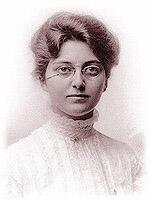
Rhoda Kaufman
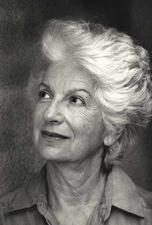
Shirley Kaufman
Shirley Kaufman’s poetry deals with family relationships, personal identity, aging and death, violence, and the meaning of Jewish fate. Moving to Israel later in life, she worked on many translations of Hebrew poetry and was noted for her series of poems about the suffering of women in the Bible, set in modern Israel.
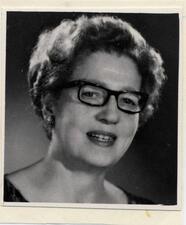
Lena Kenin
Lena Nemerovsky Kenin made major contributions to both gynecology and psychology with her successful medical practice and her groundbreaking work on postpartum depression.

Keturah: Bible
The marriage of Abraham to Keturah represents a secondary union, one that separates the procreation of offspring from the inheritance of immovable property (land), which in this case goes only to Abraham’s primary heir, Isaac—not to Keturah’s six children.

Keturah: Midrash and Aggadah
Keturah was one of Abraham’s wives. The Rabbis describe her as a woman of virtue, for which she was worthy of being joined to Abraham.

Helene Khatskels
As a member of the General Jewish Workers’ Bund, Helene Khatskels fought to realize socialist ideals about autonomy and liberation. As a Yiddish teacher and writer in Tsarist Russia and later the Soviet Union, she demonstrated a commitment to spreading and inspiring pride in Yiddish culture.
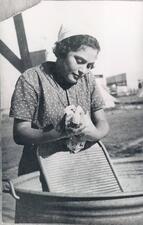
Kibbutz
Although the kibbutz was intended as an equalitarian, democratic utopia, attempts to achieve gender equality have been limited by traditional masculinities and male-controlled spheres and gender inequalities have persisted.
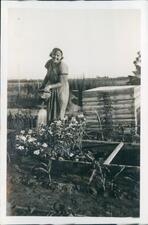
Kibbutz Ha-Dati Movement (1929-1948)
Beginning in 1929, the religious kibbutz (Kibbutz Ha-Dati) movement represented the confluence of progressive ideals of equality and collectivism and traditional customs of Judaism. As a result, women in the movement lived at a crossroads.
Killer Wife in Jewish Law and Lore
The Talmud states that if a woman is twice or thrice widowed, she is prohibited from remarrying because it is presumed that she is a killer wife and that her next husband will also die. This has been applied in post-Talmudic law, but also negated by some halakhic decisors.

Kinnim (Tractate)
Tractate Kinnim (“nest” or “birds in a nest”), the last tractate in Order Kodashim (Holy Things), deals with the smallest type of sacrifice, a pair of turtledoves or young pigeons—one nest, hence the title.

Francine Klagsbrun

Idit Klein

Melanie Klein
Melanie Klein was a pioneer in the psychoanalysis of children and inventor of the “play technique.” She contributed important insights regarding the treatment of individuals suffering from psychosis and personality disorders. Born to a Jewish family in Vienna at the turn of the century, she later lived and practiced in Budapest, Berlin, and London.
Rabbi Abraham Isaac Kook
Kurdish Women
Jews lived in Kurdistan for 2,800 years, until a mass migration to Israel in the 1950s. This Jewish community’s ancient roots and relative seclusion in the Kurdistan region fostered unique religious, cultural, and linguistic characteristics. Despite assimilation and the loss of traditional practices, the community remained tight-knit.

Leah: Bible
Leah is the sister of Rachel, and many of the stories about her center around her turbulent relationship with her sister, as they are both Jacob’s wives. Jacob clearly prefers Rachel, and the sisters repeatedly compete with each other for Jacob’s affection. Leah and Rachel are remembered as the ancestresses “who built up the house of Israel” (Ruth 4:11).

Leah: Midrash and Aggadah
Leah is the sister of Rachel and the wife of Jacob. God blesses Leah with children; she has six sons and one daughter, and two of her sons become ancestors of two of the twelve tribes. She may not have been Jacob’s preferred bride, but she is interpreted as extremely selfless and generous.
Legal-Religious Status of the Female According to Age
Legal status in Judaism is determined by age, sex, legal capacity, and, to some extent, by class and societal status. Legal majority in Jewish law was achieved relatively early in comparison to contemporary standards.
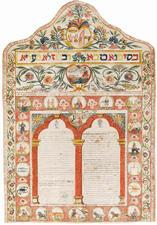
Legal-Religious Status of the Married Woman
Rabbinic law defines the criteria and requirements for traditional marriage, marital rights, and divorce. However, the rabbinic marital system poses many problematic issues for women, especially for agunot, women trapped against their will in marriages by their husbands.
Legal-Religious Status of the Moredet (Rebellious Wife)
A woman who is deemed a moredet is severely disadvantaged in her legal standing. There are various ways in which a women is considered a moredet, and all legal processes dealing with rebellious wives put women at a legal disadvantage.
Legal-Religious Status of the Suspected Adulteress (Sotah)
Legal-Religious Status of the Virgin
Virginity has long remained a significant feature of womanhood in Judaism. Many foundational Jewish texts detail the specifics of virginity, explaining the requirements of virginity and to what extent these requirements can be expanded.
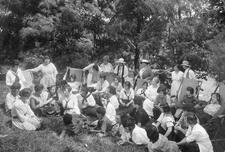
Leisure and Recreation in the United States
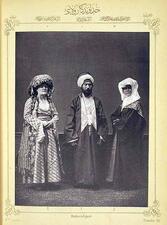
Levant: Women in the Jewish Communities after the Ottoman Conquest of 1517
Following their expulsion from the Iberian Peninsula in 1492, many Jews settled in Palestine, Egypt, and Syria – regions which fell under Ottoman Control in 1517. Girls in the Levant were married at young ages, polygamy was common, and obtaining a get was very difficult. Nevertheless, many Jewish women worked outside the home and kept their earnings.
Elma Ehrlich Levinger
Early twentieth-century author and educator Elma Ehrlich Levinger wrote over thirty books for children and several for adults—all of which emphasize the importance of maintaining Jewish identity in America.


